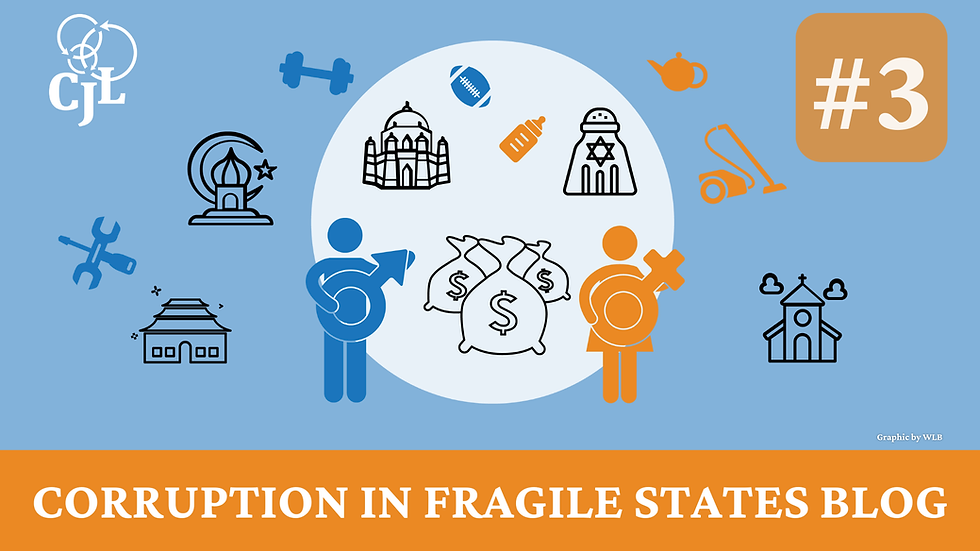What is a systems-based corruption analysis?
- Rosemary Lark, CJL

- Aug 29, 2019
- 2 min read
The easiest way to explain a systems-based corruption analysis is to break the process into its component parts. A corruption analysis is the identification of the factors that generate the patterns of behavior known as corruption. Each of these factors—drivers, enablers, effects, and mental models—are important in sustaining the pattern.
Drivers are those factors that cause people to participate in corruption.
Enablers are factors that facilitate or make corruption possible, but are not the reason why it happens.
Effects represent the outcomes of the corrupt practices.
Mental models are ways of framing or thinking about issues, generally implicit, that often influence behaviors.
Once the relevant factors have been identified, the next step is to organize them in a series of “causal loops” that show how they interact with each other as a system. Adding this systems-based component advances the analysis beyond a simple list of factors. Instead it creates a “map” of how the factors relate to each other to produce consistent patterns of corrupt behavior. The resulting causal loop diagram or “systems map” provides a visual tool that can be used to identify “leverage points”—aspects of the corrupt system that are susceptible to change. Chief among them are two basic loops—reinforcing and balancing—which can be seen as the equivalent building blocks of complex social and economic systems. These simple structures combine in an infinite variety of ways to produce the complex system.
Reinforcing loops compound change in one direction with even more change, amplifying an effect. For example, in the Wirecard example, accounting irregularities boosted the firm’s stock price, attracting a larger circle of shareholders. That created more pressure to accelerate the stock market gains, leading to a reinforcing loop that increased and widened the fraud.
Balancing loops resist further increases in a given direction. Balancing loops try to bring things to a desired state and keep them there. With Wirecard, short sellers, whistleblowers, and financial journalists tried to play a balancing role by alerting the market and the regulators to the company’s accounting irregularities. Had financial regulators listened to them and acted on their concerns, they could have “balanced” out the amplifying forces driving the corruption. This would have reinforced the strength of the balancing loop, making it the dominant dynamic and ensuring that the integrity of Germany’s financial system was maintained.





Comments